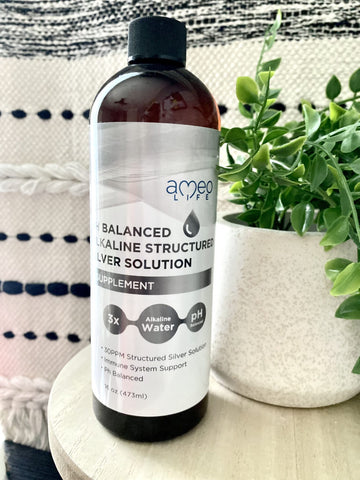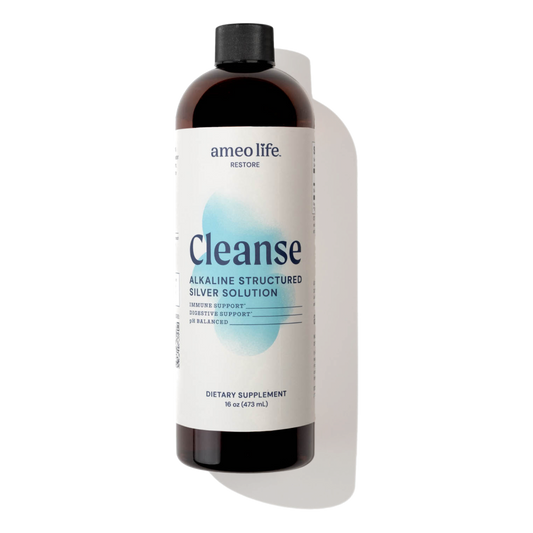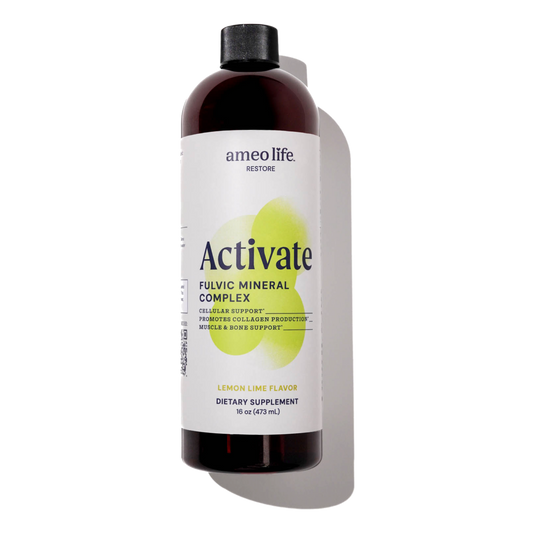Does Candida Yeast in Stomach Affect Everyone Equally?

What Kind Of Candida Yeast in Stomach Is It?
You’ve likely heard of Candida or yeast infections. You may have even experienced a yeast condition. But exactly what is this yeast?
First of all, yeast (like a bacterium) is a eukaryote… a single-celled organism. It reproduces asexually… in other words, it does not need a partner to make baby yeast cells.
In biological terms, yeast is classified as a fungus. Scientists have identified about 1,500 species of yeast.
Yeast is present in just about every place on Earth, in soil, on plants, and on and in the bodies of animals (yes… including humans). As we dig into this deeper, you will see how Structured Silver Solution can play a part keeping the good bacteria around while dissabling the bad.
Is Candida Yeast in Stomach Normal ?
It may surprise you to know that Candida, the dreaded yeast that we recognize as causing so many problems in our bodies, is a normal part of our digestive system.
There are actually more than twenty species of Candida present in our bodies. The one that we hear about most frequently as causing yeast infections is Candida albicans.
In a healthy person, Candida may be present on the skin, the mucous membranes of the mouth and throat, in the vagina, and within the digestive system.
If Candida Yeast in Stomach is Supposed to be there, Why is it a Problem?
As long as it remains in balance, Candida is not a problem. But Candida is opportunistic, which means that it doesn’t usually cause issues in healthy individuals.
The trouble arises when our bodies get out of balance, possibly with a compromised immune system, giving the Candida a chance to grow out of control into a harmful yeast condition.
Problems occur when an illness or weakened immune system gives the candida yeast in stomach an opportunity to thrive and reproduce unchecked. Changes in the body's pH due to medication or pregnancy can also cause the yeast cells to flourish, and magnify the yeast condition.
One of the things that keeps yeast growth under control is the presence of beneficial bacteria in the gut and sensitive areas of the body for both men and women. That’s why women more frequently experience yeast infections after a round of antibiotics. The antibiotics tend to kill all bacteria, both bad and good, leaving the yeast unrestrained.
Common Types of Yeast Infections (yes, they affect both males and females)
Yeast grows under warm, moist conditions. The most common places where Candida overgrowth occurs will be in these environments. Common names for fungal infections caused by yeast include:
- Vaginal yeast infections
- Jock itch
- Thrush (yeast overgrowth in the mouth and/or throat)
- Some diaper rash (not all diaper rash is fungal)
- Athlete’s foot
- Nail fungus (common on toenails and fingernails under artificial nails)
Candida Can Grow In Unexpected Places
Whether due to damp or tight-fitting clothing, socks and shoes, wet or dirty diapers, or just because it’s a warm, moist area of the body, Candida will take full advantage of these opportunities to flourish and can quickly get out of control.
While these conditions can be a painful, itchy nuisance, systemic or invasive Candida infections can become quite a serious health threat. Occurring most often in people with compromised immune systems, candidiasis can affect the blood (candidemia), heart, brain, eyes, and bones.
Candida can overtake the intestinal microbiome, producing gas and bloating. And it can overwork the liver, leading to serious complications like autoimmune disorders.
What Is Usually Done With Candida Yeast In Stomach
When a patient is seen by a physician and they determine that a fungal infection is present, an anti-fungal medication is usually prescribed.
Often when experiencing a recurring infection, one may already believe that the cause of their discomfort is candida yeast in stomach … perhaps they made a visit to Dr. Google. They may purchase over-the-counter anti fungals such as fluconazole, miconazole nitrate, terbinafine hydrochloride, or clotrimazole… some of the many medications available for athlete’s foot and vaginal yeast infections.
Unfortunately, Fungi, Just Like Bacteria
Can over time become resistant to the drugs that we use to kill them. When a medication doesn’t kill all of the fungi, those that survive are now resistant to that particular drug.
Because they don’t require a mate to produce offspring, the surviving cells easily reproduce, rendering all their descendants resistant to the anti-fungal medication, which cannot kill them.
As you can probably guess, this can become quite a problem, especially for people with the invasive forms of Candida yeast infections that can lead to disability.
We need a better solution to win the battle against pathogenic yeast in the long run.
Alkalinity and the Human Body
The human body is alkaline by nature… the pH of blood ranges between 7.35 to 7.45. Alkaline is the opposite of acidic.
The immune system has a tendency to reject things that it sees as foreign, or a threat.
When talking about pH Balanced Alkaline Structured Silver with alkaline structured silver, its alkaline pH means that it works in harmony with the blood.
Older forms of colloidal silver are being rejected by the immune system which are formulated with nitric acid.
Alkaline Structured Silver vs. Yeast Cells

Studies show that silver may cause fungal cells to die by breaking down or collapsing their cellular components. Structured silver triggers this cellular breakdown by destroying the cellular membrane.
pH balanced Alkaline Structured Silver, bonded to pure, distilled water molecules, forms a tetrahedral, crystalline structure.
This structured silver attacks microbes in multiple ways. When exposed to _Candida_ or other infectious fungi, the silver
attacks the yeast's cell walls. As a result, the yeast cells break down, unable to hold themselves together.
Is Structured Silver as Effective as Anti-fungal Medications in Fighting Yeast Infections?
By now you may be wondering if silver may be as effective as the anti-fungal drugs on the market? In short, the answer is, 'Absolutely!'
Studies have shown structured silver to be more effective than fluconazole, one of the leading anti fungals on the market today.
A Little History Lesson
There is actually has a long history. Silver water vessels and colloidal silver have been used for centuries to protect people's health across the globe. Silver is one of the first five metals discovered by our human ancestors. (the other four are gold, copper, lead, and iron.) Evidence of its use goes back over 6,000 years… to ancient Greece, Anatolia (which is now Turkey), and Sumer.
Silver’s use in tableware such as pitchers, goblets and cutlery served to kill off harmful and potentially deadly bacteria and microbes long before people knew or understood that bacteria, microbes, or germs even existed.
Herodotus, the 5th century BCE Greek writer known as the “Father of History,” reported that the Persian kings would only drink water that had been kept in silver containers. In civilizations such as Ancient Rome, Egypt, Greece, and Phoenicia, the use of silver containers helped to preserve their water and food.
In the early days of American colonization, European-American pioneers placed silver coins in water containers. This practice kept the water safe to drink during their long and arduous westward journeys.
Silver's Earliest Appearance in Medicine
Silver's use for medical purposes dates back to the Macedonian times, as evidenced by historical records. Even the Greek physician Hippocrates, the “Father of Medicine,” is known to have used it for healing wounds and treating ulcers in his patients.
References:
Centers for Disease Control and Prevention, Antifungal Resistance
Hwang, I. , Lee, J. , Hwang, J. H., Kim, K. and Lee, D. G. (2012), Silver nanoparticles induce apoptotic cell death in Candida albicans through the increase of hydroxyl radicals. The FEBS Journal, 279: 1327-1338. doi:10.1111/j.1742-4658.2012.08527.x
Apoptosis: definition, mechanisms, and relevance to disease, The American Journal of Medicine, ISSN: 0002-9343, Vol: 107, Issue: 5, Page: 489-506, Pub. 1999
Kim KJ1, Sung WS, Suh BK, Moon SK, Choi JS, Kim JG, Lee DG, Biometals. 2009 Apr;22(2):235-42. doi: 10.1007/s10534-008-9159-2. Epub 2008 Sep 4, Antifungal activity and mode of action of silver nanoparticles on Candida albicans
Kim KJ1, Sung WS, Moon SK, Choi JS, Kim JG, Lee DG, J Microbiol Biotechnol. 2008 Aug;18(8):1482-4, Antifungal effect of silver nanoparticles on dermatophytes
Chemicool, Silver Element Facts
Alexander, James. (2009). History of the Medical Use of Silver. Surgical infections. 10. 289-92. 10.1089/sur.2008.9941.







